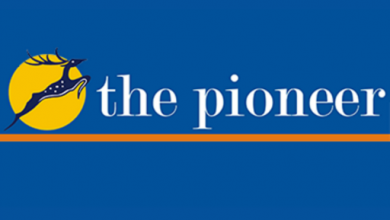Not just about Rhea
Celebrities make news but we need to map the extent of drug abuse among young Indians and address systemic flaws in curbing it
For the large consumers of salacious news and celebrity scandals, there may be a sense of comeuppance about Rhea Chakraborty’s arrest for supplying drugs to late actor Sushant Singh Rajput. The conspiracy theory that she might have pushed him to addiction, swindled him, could have diverted funds and in the process pushed him over the edge by entrapping him in a world of debt and drug cartels, has become a credible story that the nation is devouring hungrily. Simply because legal evidence and cold facts of the actor’s mysterious death are too dry to be juiced out for news cycles. Simply because a glamorous starlet allows the masses to project their sinful obsessions, aspirations and high crimes to a certain societal strata and claim moral righteousness by exclusion. So Rhea going to jail becomes a visual that is more satisfying as a portrait of instant justice. Just as the arrest and subsequent police custody of Karnataka actor Ragini Dwivedi in relation to a drug bust is representative of how the State film industry is addicted. Or actor Kangana Ranaut’s campaign to clean up the Hindi film industry of narcotics, as she challenged its youth icons to take the drug test, made substance abuse a headline point. Fact is, film industries everywhere have had celebrity drug users for years, the likes of lysergic acid diethylamide (LSD) and methylenedioxy-methamphetamine (MDMA) common in the circuit. Many film personalities have been involved in the drug racket either in the capacity of a consumer or supplier. That by no means should normalise their behaviour or exempt them from punishment. But a top-notch arrest makes a seething urban sub-culture a sensational discovery. The fact is the drug menace exists in the corporate sector, among high fliers, students and the next door neighbour in Indian cities. Rave parties, often funded by drug syndicates themselves, have not left any of our cities untouched. Still, urban India justifies its self-denial by projecting its ills on to others and condemning them.
So nobody talks of this year’s biggest drug seizure by the Narcotics Control Bureau (NCB) in July when its officials recovered 234 kg of opium in Rajasthan. It seemed some legal cultivators, especially those in Mandsaur, Neemuch and Ratlam districts of Madhya Pradesh and Chittorgarh and Jhalawar districts of Rajasthan, diverted opium through illegal channels and sold it to intermediaries for profit. Drugs have become a societal epidemic, affecting generations and percolating through all strata, presenting a much larger problem than the faces we might try to attach to it. According to an AIIMS report, Magnitude of Substance Use in India, which it submitted to the Ministry of Social Justice and Empowerment in February 2019, around five crore Indians had used cannabis and opioids at the time of survey. About 8.5 lakh people injected drugs. About 60 lakh people were estimated to need help for their opioid use problems. More than half of these numbers came from Punjab, Assam, Delhi, Haryana, Manipur, Mizoram, Sikkim and Uttar Pradesh. But the most shocking discovery was that of alcohol being the most abused substance in India. Disturbingly, more and more children are taking to alcohol consumption and the highest percentage has been reported from Punjab followed by West Bengal and Uttar Pradesh. Even more disturbing is the fact that students, particularly those in harshly competitive disciplines like medicine and engineering, are routinising drugs as a stress-buster. So drugs, more than an aberration, have now become the commonest relaxant among the young. Ignoring their destructive aspect, students see them as a coping strategy as they battle performance pressures. Then there are the usual triggers like peer pressure, which make drug consumption almost like a rite of passage. People in the lower income group or the jobless seek the same kind of escapism. And the police system has failed to plug the loopholes that allow for easy availability of drugs. With smuggling rampant among porous border States, it is indeed difficult to track every consignment that moves rapidly along a well-established traffickers’ network. There is a need to strictly implement the Narcotic Drugs and Psychotropic Substances (NDPS) Act, which provides for care and legal rights of the drug user. But our de-addiction and rehabilitation centres are ill-equipped to rescue the youth. Counselling should be institutionalised in schools and colleges, with physicians and psychologists holding workshops from time to time. Community-level interventions through self-help groups, that are at the forefront of many corrective campaigns, should be prioritised. Also, there is a need to define addiction strictly in the Act. Otherwise, it equalises hardcore addicts with recreational users, the former diseased by dependency and helplessness, the latter making a conscious choice by design. Drug users are a vulnerable lot and we shouldn’t stigmatise them as criminals. That defeats the purpose. Similarly, many experts have suggested legalising the use of cannabis as that would lead to a regulated economy and use. You can certainly punish Rhea Chakraborty for smoking weed but how many young people will we put into jail by that logic? So let us get off our high hobby-horse, effect systemic changes and stop looking for scapegoats to expiate our collective guilt.
Thursday, 10 September 2020 | Pioneer





